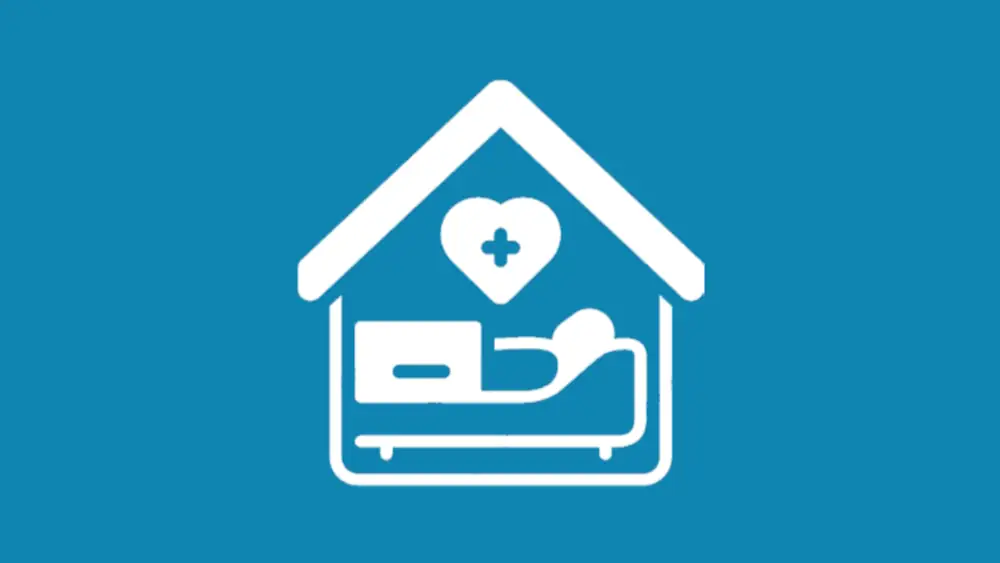Improve Health Outcomes Through High-Value Care

AMGA Goal
Improve health outcomes through a multifaceted approach that empowers patients, eliminates barriers to access, promotes coordinated and patient-centric care, and supports high-value care models. Reforms must focus on systematic improvements that create improved health outcomes, rather than on separate and distinct efforts.
AMGA strongly supports efforts to help providers address our nation’s chronic disease crisis by targeting disparities that disproportionately affect health outcomes across various populations and geographic locations. With a comprehensive approach that embeds appropriate goals and incentives into care models and provides greater integration of necessary systems, we can work to ensure healthcare is accessible, effective, and tailored to meet the needs of every beneficiary. By reducing disparities driven by factors including race, ethnicity, socioeconomic status, and geographic location, we can make America healthier, increasing life expectancy while reducing healthcare costs.
Healthcare providers play a critical role in addressing chronic disease and its associated poor health outcomes, but it is essential for policymakers to recognize healthcare systems cannot solve this crisis alone. Within the healthcare industry, it is widely recognized that up to 80% of health outcomes are linked to issues outside the control of healthcare providers and require broader societal interventions.1 The healthcare system is currently tasked with treating illnesses and managing health conditions, but social drivers of health—such as housing, education, food security, transportation, and economic stability—heavily influence health outcomes. For example, a patient with diabetes may receive high-quality medical care, but lack access to affordable, nutritious food or safe spaces for physical activity. Even if such patients receive optimal medical care, their health might still deteriorate due to their underlying environmental circumstances. Expecting healthcare providers to solve systemic issues without addressing underlying socioeconomic drivers places an unrealistic burden on the system and its workforce. More importantly, these efforts are unsustainable and ultimately unsuccessful.
Despite these challenges, AMGA represents thousands of providers who understand the vital and instrumental role our healthcare system plays in addressing these disparities and dismantling the chronic disease epidemic.
To help the provider community best serve the American public, AMGA recommends that Congress integrate health outcomes into policy decisions, program design, and healthcare delivery models by pursuing the following:
Support providers’ ability to address larger societal challenges as an aspect of high-value care
Empowering healthcare providers to tackle broader societal issues—such as housing instability, food insecurity, and transportation barriers—can lead to more comprehensive and effective patient care. By integrating social drivers of health into care plans, providers can improve health outcomes and reduce long-term healthcare costs.
High-value care encourages providers to adopt interventions to support patient health holistically, considering both the medical and nonmedical needs that impact well-being. To further these goals, targeted policies and reimbursement structures are essential to ensure patients receive the specific attention and care they need based on their individual circumstances. This can be achieved through appropriate payment adjustments, tracking population health outcomes, and offering financial incentives to patients.
Payment adjustments that account for patient characteristics, such as socioeconomic status or geographic location, ensure providers have the resources they need to care for all communities and provide access to high-quality care. Higher reimbursement rates for addressing disparities or managing complex care needs support the ability of healthcare providers to treat patients’ immediate care needs, while also collaborating with patient navigators and community-based organizations to manage non-healthcare needs that significantly impact a patient’s overall well-being. Federal policy should emphasize performance metrics that track population health outcomes. Timely and relevant data can empower providers to provide targeted interventions that address gaps in care. In addition, financial incentives for patients to engage and maintain their health help patients adopt healthier behaviors, drive appropriate engagement with providers supporting their health, and reduce barriers to care.
High-value care can serve as a powerful tool to improve health outcomes by aligning financial incentives with improved patient outcomes. When policymakers create payment structures that empower providers to deliver holistic, person-centered care and allow flexibility in treatment approaches, providers will be better equipped to address social drivers of health and improve health outcomes.
Standardize metrics, technology, and payment models to promote optimal outcomes
Implementing uniform quality metrics, interoperable technologies, and consistent payment structures enables healthcare systems to better measure performance, enhance care coordination, and incentivize high-value care.
The shift to high-value care is hindered by critical gaps in infrastructure and data integration. Without the appropriate foundation, how can we expect the system to remain stable or improve?
The absence of a robust, standardized data infrastructure limits providers’ ability to capture, analyze, and act on essential information. Inconsistent data systems hinder the ability to monitor progress, identify disparities, and ensure care delivery is delivered as efficiently and effectively as possible. Without integrated technology and comprehensive data collection, high-value care’s potential to improve outcomes remains untapped.
Compounding this issue is the lack of standardized metrics and comprehensive reporting mechanisms at the state and national levels. While high-value care models aim to address disparities, the absence of transparent, standardized metrics makes it difficult to assess whether interventions are effective and identify where gaps in care still exist. According to a 2024 NAACOS white paper, ACOs frequently cite difficulties integrating disparate electronic health record (EHR) systems and aligning data from multiple payers as a core barrier to effectively using data to drive high-value care.2
Potential solutions to modernize our data infrastructure include:
-
Ensuring adequate federal funding for health IT systems, including mandated upgrades necessary to comply with new or revised regulatory requirements, as required by the 21st Century Cures Act (Cures Act) and the Health Information Technology for Economic and Clinical Health (HITECH) Act
-
Supporting interoperability standards across payers and providers
-
Establishing comprehensive health metrics to enable healthcare organizations to compare health outcomes across national benchmarks
By enhancing systems that can track and measure health outcomes, healthcare providers will gain actionable insights, enabling more informed decision making to better target interventions and address disparities.
Expand community resources to address barriers to care
Investing in community-based services—such as mobile clinics, telehealth access points, and health education programs—can mitigate barriers like geographic isolation, lack of transportation, and limited health literacy. Enhancing these resources ensures all populations can access high-quality care.
Healthcare providers cannot drive change alone. To meet patients where they are, especially in underserved and historically marginalized communities, systems must be empowered to partner with community-based organizations, patient navigators, and trusted local leaders. These partnerships enable providers to extend their reach beyond the clinical setting and connect patients with the resources they need to thrive.
Embedding community health workers and patient navigators into care teams is especially critical. These individuals bridge the gap between providers and patients, helping navigate care, build trust, and ensure cultural and linguistic alignment. For example, patient navigators can ensure adherence to care plans by coordinating with community-based organizations that support transportation, nutrition, and adequate housing concerns for patients. Their presence not only reduces logistical barriers, but also helps tailor care to the unique needs of each community.
Federal models like the Accountable Health Communities Model have shown promise in aligning clinical care with social services, but widespread impact depends on adequate funding, policy flexibility, and long-term sustainability. Expanding and scaling these types of initiatives is essential to achieving the goal of transforming healthcare into a truly accountable ecosystem.
“Our high-value care team utilized reporting from our payers to identify patients with confirmed and predicted social drivers of health (SDOH) who were in the doughnut hole and on branded medications. These patients are statistically more likely to suffer from non-adherence, leading to increased utilization. We proactively reached out to these patients using both social workers and certified pharmacy technicians to offer help with navigating patient assistance programs. We processed 219 applications, of which 142 were approved, resulting in $771,164 in savings in 2024 to the service pool for Medicare patients. These same patients, once renewed, will lead to $1,222,925 saved in 2025. Patients on assistance programs have no cost to their medications, which in turn removes the financial SDOH barrier and contributes to the health equity in our patient population.”
— Wendy Ferrell-Smith, MHI, BSN, CCM, Chief Value Based Care Officer, Summit Medical Group
Conclusion
Ultimately, achieving optimal health outcomes requires both a well-supported healthcare system and the active involvement of non-health sectors. Policymakers must strike this balance, enabling the healthcare system to focus on what it does best— providing care—while fostering cross-sectoral collaboration to address the root causes of health disparities and chronic disease. Without this balance, efforts to advance optimal health outcomes for all populations may falter, leaving our nation to continue bearing the burden of preventable health disparities.

Enhance Patient Engagement
Empower patients to take an active role in their healthcare decisions.

Improve Health Outcomes
Address disparities to ensure all populations receive high-quality care.

Protect Patient Dignity at End of Life
Promote compassionate care that respects patient preferences.

Remove Regulatory and Statutory Barriers
Reduce administrative burdens that impede care delivery.

Support Practices Serving Rural and Underserved Populations
Ensure equitable resources and support for all providers.

Ensure the Long-Term Sustainability of High-Value Care
Establish a payment model that ensures long-term viability for providers.
For more information on the AMGA MACRA and Value-Based Care Task Force Recommendations
1 Magnan, S. 2017. Social Determinants of Health 101 for Health Care: Five Plus Five. NAM Perspectives. Discussion Paper, National Academy of Medicine, Washington, DC.
2 NAACOS. 2024. ACO drivers for success: Lessons from high-performing accountable care organizations. National Association of ACOs. www.naacos.com/wp-content/uploads/2024/09/ACODriversForSuccessWhitePaper.pdf